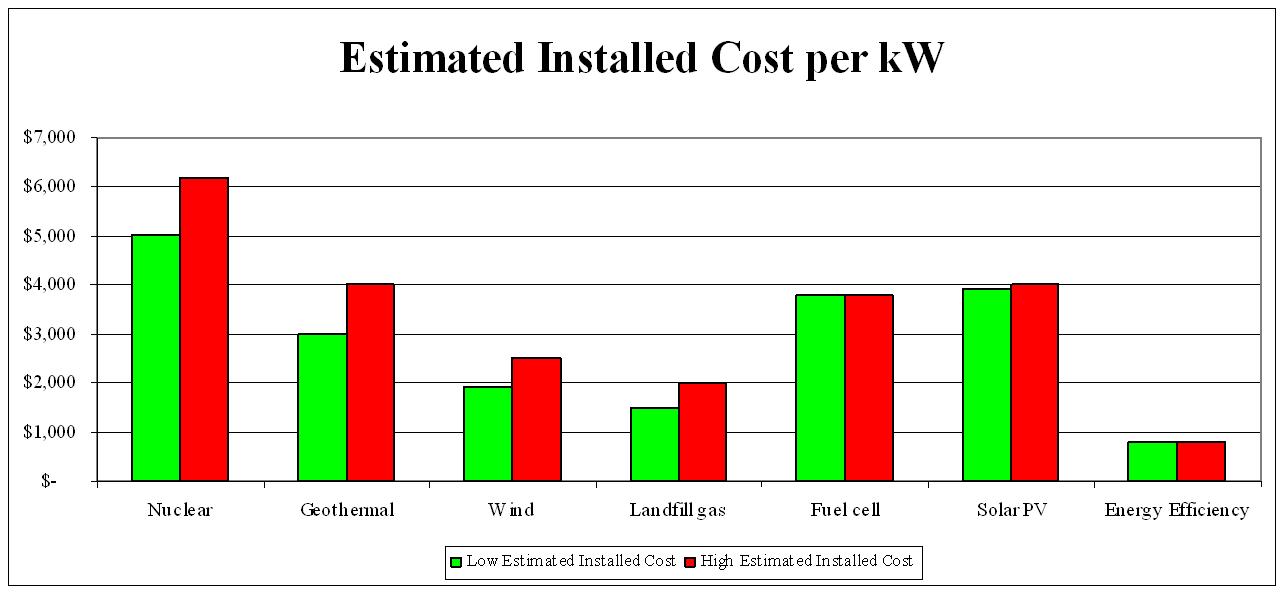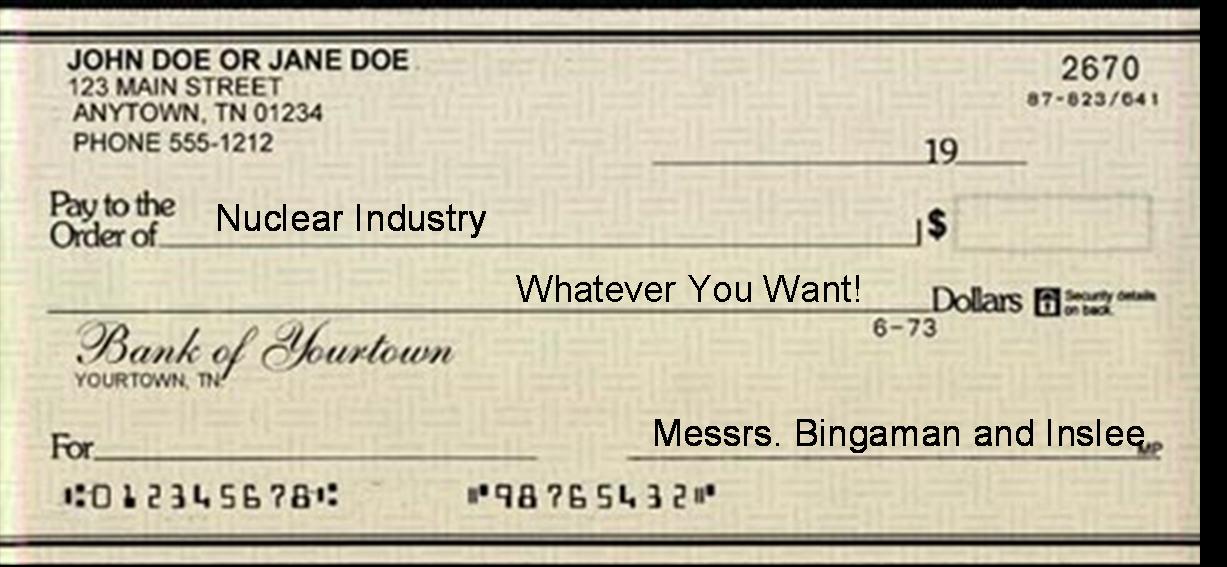Impressive nuclear headlines in the papers these days, largely as a result of a new report released by our office entitled: “Costs of Current and Planned Nuclear Power Plants in Texas: A Consumer Perspective. The report finds that the proposed expansions of nuclear power plants in Bay City (South Texas Project) and Glen Rose (Comanche Peak) could cost $22 billion, boost the cost of electricity for consumers and curtail investment in energy-efficiency programs and solar power.
The headline in the San Antonio Express News yesterday morning, just below the banner no less, read: Nuke Plan May Cost $22 Billion
This morning the Fort Worth Star Telegram also ran an article titled Anti-nuclear group: Comanche Peak expansion could cost $27.6 billion
The San Antonio Current’s Queblog also reports: Projected nuke power’s price tag inflating.
In addition to a real cost estimate for nuclear power plant expansions in Texas, the report also compares the cost of nuclear power to the cost of alternatives such as wind, solar, and energy efficiency. I’d encourage anyone who complains about the expense of renewable energy but claims that nuclear power is “cheap” to take a gander at the following graph:

Wow. Even on the low estimate end, energy efficiency costs just a fifth of what we would spend to get that kind of power from a nuclear plant, and wind and solar both come in well under that cost of nukes. Take that, naysayers!
A major concern brought up in this report is that the massive capitol outlays for nuclear power options may drain available financial resources for making advancements in deploying more cost effective alternative resources. In San Antonio, this could mean that CPS Energy chooses to partner with the South Texas Project Nuclear Expansion at the expense of Mission Verde, Mayor Phil Hardberger’s aggressive plan to green the city’s infrastructure, businesses, energy sources and technology.
“This new report indicates that we’re going to have to decide now which energy future we want for San Antonio,” said Bexar County Commissioner Tommy Adkisson. “If CPS becomes a partner in the South Texas Project expansion, we are simply not going to have the financial resources to front Mission Verde. We can either choose the most expensive option possible and send our jobs to Bay City and overseas contractors, or pay a fraction of the cost to create thousands of jobs here at home and power the city with clean, green energy.”
For more information on how consumers could get stuck with the check if the nuclear plant goes over-budget or can’t meet its construction schedule (as they are notoriously wont to do), check out our press release.
The San Antonio Current’s Queblog reports,
Prior to deregulation in 2001, ratepayers were drained of $5 billion in capital costs for the nukes in North Texas and Bay City, according to Johnson’s “Costs of Current and Planned Nuclear Power Plants in Texas.”
Also, much of the overruns associated with Comanche Peak and STP have been borne by electric consumers in Texas’ deregulated market since, who “continue to pay off at least $3.4 billion for nuclear assets through transition charges, as well as $45 million in annual payments for nuclear decommissioning,” Johnson writes.
Additional associated STP costs have also been passed along by AEP and CenterPoint to their customers.
Those interested in the report may also download either the full report or a short fact-sheet detailing the report’s major findings.
Along these same lines, turns out today is the Nuclear Information and Resource Service (NIRS)’s national call-in day to end coal and nuclear subsidies. (more…)
Read Full Post »
 Buried in the language of the “Clean Energy Bank” legislation sponsored by Senate Energy Committee Chairman Jeff Bingaman and Rep. Jay Inslee (D-WA) is a blank check to the nuclear industry.
Buried in the language of the “Clean Energy Bank” legislation sponsored by Senate Energy Committee Chairman Jeff Bingaman and Rep. Jay Inslee (D-WA) is a blank check to the nuclear industry.
 Thanks to Luke Metzger at the
Thanks to Luke Metzger at the  Time for a Friday wrap-up, all the news that’s fit to link:
Time for a Friday wrap-up, all the news that’s fit to link:
 Representative Swinford and Representative Anchia, calls for an incentive program for solar power generation through surcharges on utility bills, and Mark Strama is looking at how Texas Schools specifically could benefit from the construction of solar panels on their rooftops.
Representative Swinford and Representative Anchia, calls for an incentive program for solar power generation through surcharges on utility bills, and Mark Strama is looking at how Texas Schools specifically could benefit from the construction of solar panels on their rooftops. For your Earth Day enjoyment, Public Citizen, Sierra Club, and Environmental Defense have written a joint Op-Ed that has been published in both the Austin American Statesman & the Houston Chronicle. So on this day of celebration,
For your Earth Day enjoyment, Public Citizen, Sierra Club, and Environmental Defense have written a joint Op-Ed that has been published in both the Austin American Statesman & the Houston Chronicle. So on this day of celebration, 

 announced an
announced an 
 Good mooooooorning Texas! Just woke up, haven’t even gotten out of my pajamas or had my coffee (okay, I’m running a little late), but I couldn’t wait a moment longer to spread the good news. We’ve hit the big Times.
Good mooooooorning Texas! Just woke up, haven’t even gotten out of my pajamas or had my coffee (okay, I’m running a little late), but I couldn’t wait a moment longer to spread the good news. We’ve hit the big Times. Hey folks, tomorrow a whole host of solar bills are going into be heard in the Senate Business and Commerce Committee. Our friends over at Environment Texas have a petition up where you can
Hey folks, tomorrow a whole host of solar bills are going into be heard in the Senate Business and Commerce Committee. Our friends over at Environment Texas have a petition up where you can 

